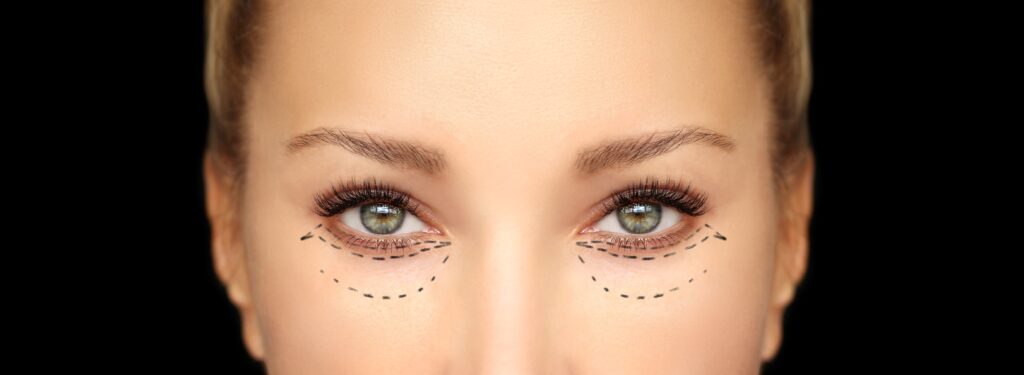Content
BLEPHAROPLASTY - WHEN TO OPERATE
Aesthetic eyelid correction is an operation that removes hanging eyelids that can make you older or bother clear vision. This operation also removes bags under the eyes, which give the face a tired and worn look. On the technical side, with blepharoplasty we reduce and/or reposition excess fat, muscle and skin from the upper and lower eyelids.
The result of this operation is a younger and more relaxed look.
PREOPERATIVE CONSULTATION
During the consultation, we will perform an eye examination. We will also clarify important questions about the mechanism of tear production, dry eyes, and wearing contact lenses. Your operator will take a medical history and explain the possibilities and limitations of blepharoplasty. Informations about age, skin type, as well as the condition of vision are also important. After reaching a decision about the operation, you will be informed about details of the surgical technique and the required type of anesthesia. All the risks of the procedure also shall be discussed.
Overall, the result may be improved by an additional procedure. This can either be part of procedure or a stand-alone operation. Your operator may recommend performing a simultaneous forehead lift. Intention is to slightly raise the lowered eyebrows or refresh the appearance of the forehead. We also consider removal of wrinkles around the eyes by a non-invasive method (dermal filler, neuromodulators such as botox or chemical peeling). In this way, we achieve more complete and lasting effect. In a broader sense, even improving the appearance of the nose with rhinoplasty can draw attention to the eyes as the central focus of viewing the face.
BLEPHAROPLASTY - TECHNIQUE
Upper blepharoplasty
At the beginning of the upper eyelid surgery the surgeon draws lines on the skin. Therefore the scar fits as much as possible into the existing natural skin crease and thus makes it less visible. Surgeon makes an incision on the skin, removes excess fat, muscle and skin. The incision is closed with fine, very thin stitches. The visibility of the scar is significantly reduced.
Lower blepharoplasty
Lower eyelid surgery begins with an incision placed a few millimeters below the lash line in the skin furrow that stands out with a mimicry of laughter. We remove excess muscle and fat along with the skin. Finally, surgeon closes the incision by the same procedure as on the upper eyelid.
In some cases, we access the lower eyelid through an incision through the conjunctiva (transconjunctival blepharoplasty). We use this approach when the underlying problem is excess fat. We perform the incision on the inside of the lower eyelid. After that we remove excess fat. Incision is not visible after surgery. The usual duration of the operation is 1-2 hours.
At the end of eyelid surgery, it is not necessary to cover the eyes. Besides, it is mandatory to put antibiotic ointment on the operated area. Afterwards, sometimes we order an ointment or drops against corneal dryness, if present. A certain degree of swelling and hematoma formation is inevitable. Additionally, regular application of cold compresses as well as raising the headboard is necessary. This facilitates healing and speeds recovery. If necessary, we prescribe certain other medications to reduce such discomfort.
Sutures are removed 5 – 7 days after the procedure.
INSTRUCTIONS AFTER BLEPHAROPLASTY
Finally, whether your reason for surgery is medical or strictly cosmetic, the patient must take on the obligation to adhere to preoperative and postoperative instructions.
Approximately 7 – 10 days after eyelid surgery, the operated area should be cleaned with a mild antiseptic (dryness, itching and pressure may be felt). Sometimes we recommend to put certain drops into the eyes. Information is also given about activities that should be avoided for the next few weeks.

